Energy
It takes a lot of energy to run a university and the U of S is committed to managing energy consumption efficiently, wisely and responsibly. On October 9, 2014, the university's Board of Governors approved the Energy and Water Conservation Policy.
Energy is used on campus for:
- Heating, cooling and ventilating buildings
- Heating water
- Lighting
- Powering computers, other equipment in buildings, parking lot receptacles
- Fleet vehicles
- Food service
The Central Heating & Cooling plant burns natural gas to generate steam which is used for heating, research processes, heating swimming pools and domestic hot water. In summer, the plant uses electricity to chill water to provide air conditioning across campus.
Energy Use by Building Type
The University of Saskatchewan is home to a wide variety of buildings that run the gamut of sizes and uses. Energy use intensity (EUI, measured in terms of building energy use/unit area of building floor space/year) allows for comparison of the energy consumed in buildings of different sizes. This helps us account for how certain types of buildings use more energy than others (for example, an office building or elementary school uses relatively little energy compared to a hospital). In Canada, food service buildings, grocery stores and hospitals have the highest EUIs. Similarly, on campus certain activities lead to higher rates of energy use. The figure below shows the EUIs of campus building types relative to each other.
Lab buildings typically require much more ventilation, which consumes more heat (from steam) and electricity (to run large fan motors). Equipment other than the office equipment and lighting found in all academic and administrative buildings, accounts for some of the additional electrical use in lab buildings. Providing food for tens of thousands of people on campus uses a lot of energy.
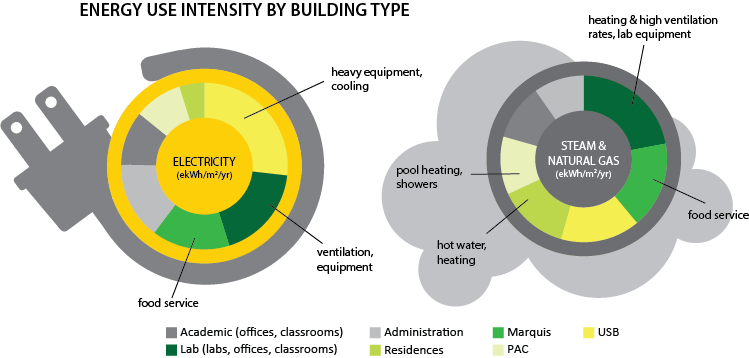
Water
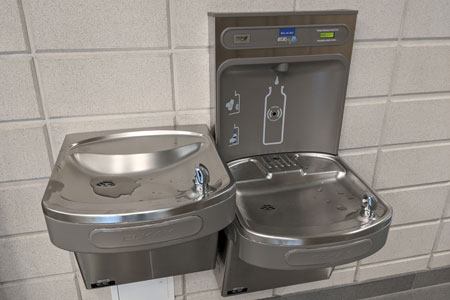
- washrooms, once-through cooling equipment, kitchens in academic buildings
- research equipment and procedures
- washrooms, showers, laundry, kitchens in residence buildings
- food service
- irrigation
- pools
- animal care
The Campus Sustainability Revolving Fund is currently taking applications for energy and water conservation projects. Once approved these projects will start saving energy, water and reduce utility costs.
In a continuing effort to make USask more sustainable, the university provides free water fountains and water bottle filling stations in high traffic areas to promote the usage of reusable water bottles and decrease the purchasing of non-reusable plastic water bottles. As funds become available, water fountains are converted to full bottle filling stations according to a list of priority locations across campus.
Water Use by Building Type
The University of Saskatchewan has a wide variety of buildings of varying sizes and types. Water use at these facilities differs greatly depending on the type of building we are considering. Water use intensity (WUI, measured in building water use/unit area of building floor space/year) allows for comparison of the water consumed in buildings of different sizes. Some types of buildings use more water than others because of activities in the buildings. The figure below shows the WUIs of campus building types relative to each other.
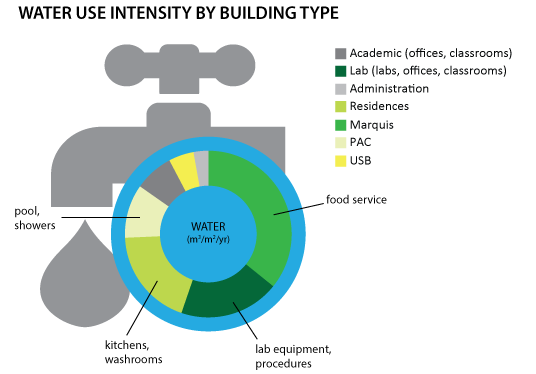
Lab buildings typically use more water for research equipment and procedures. Food service for tens of thousands of people requires large volumes of water for food preparation and cleanup. Just as in your home, considerable water is used in residences in kitchens and washrooms. The Physical Activity Complex (PAC) uses water for the pool and provides showering facilities for the hundreds of individuals using the facility daily.
Water Policies and Management
The university is committed to using water efficiently, wisely and responsibly. On October 9, 2014, the university's Board of Governors approved the Energy and Water Conservation Policy.
Solar Arrays
24 kW Horticulture Field Office Array
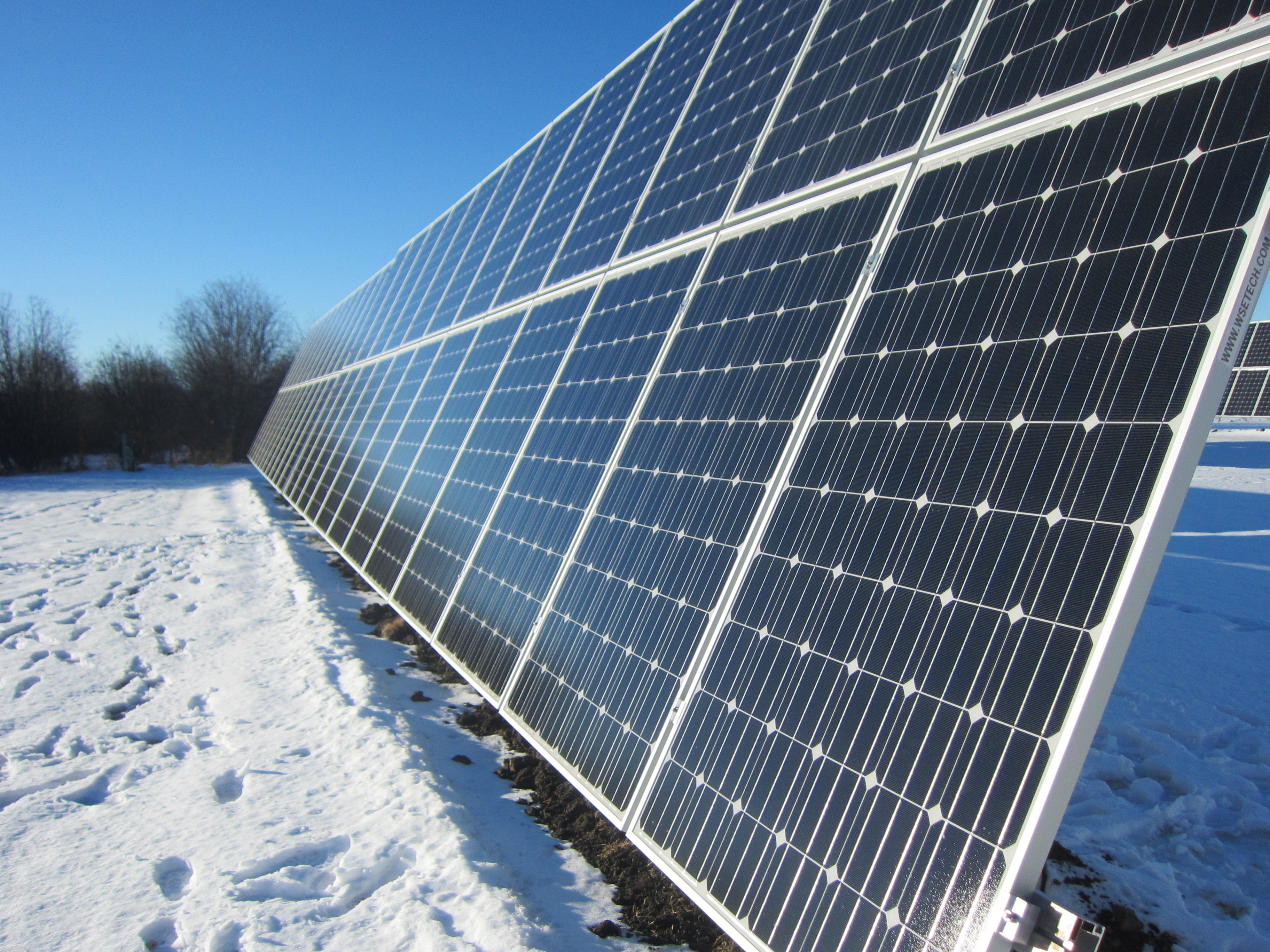
Situated at the Horticulture Department's field office on 14th St, this 24 kW solar array was erected in 2012 using a $35,000 rebate supplied by the Government of Saskatchewan. It supplies roughly 70% of the yearly power needs of the horticulture facility, similar to the amount of energy required to power 3.7 homes for a year.
5.12 kW John Mitchell Building Array
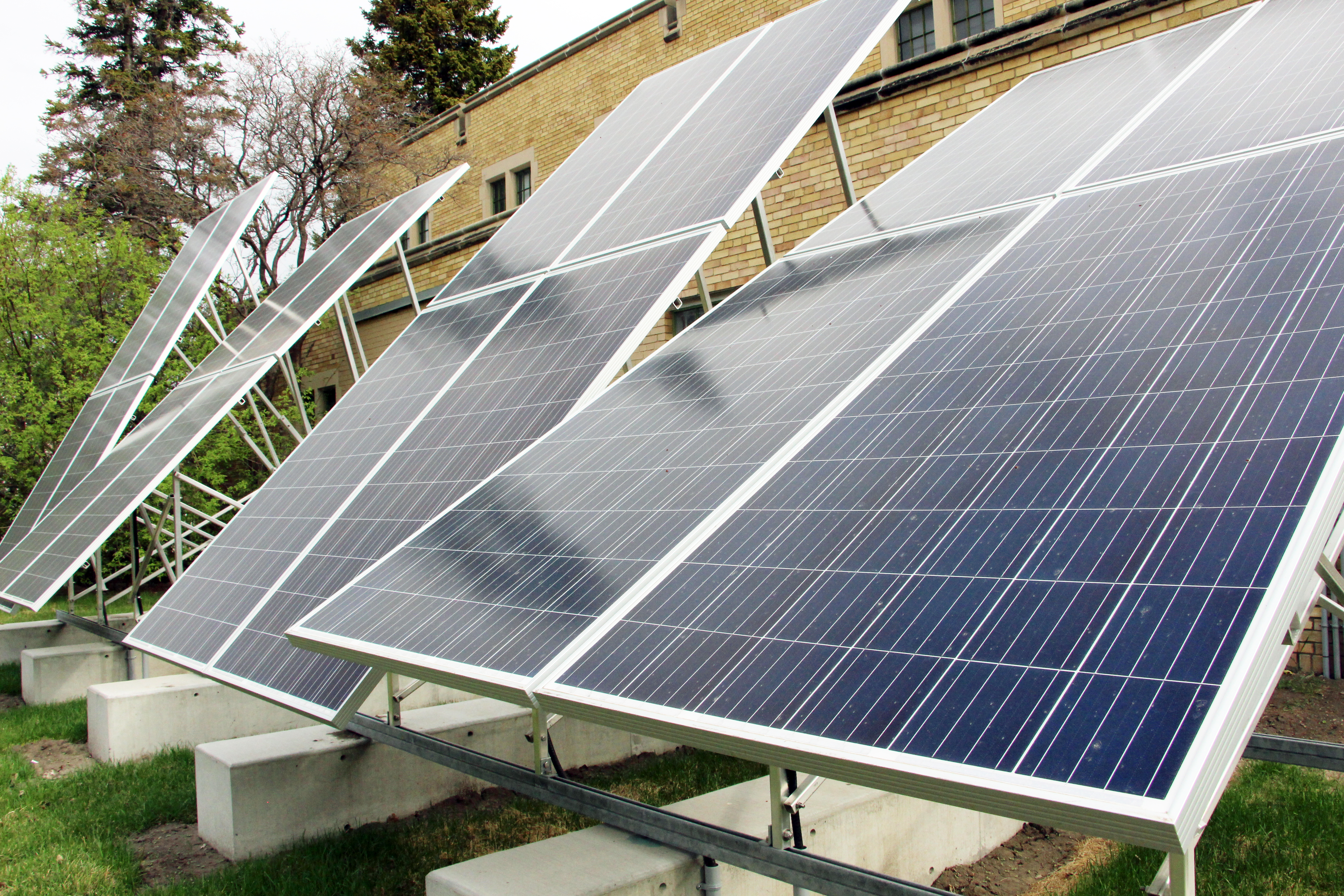
Initiatives
The Government of Canada is investing up to $1.5 million to help the University of Saskatchewan reduce greenhouse gas emissions by reducing electricity and natural gas consumption through improved heating, ventilation, and cooling systems in campus buildings. The project will analyze 26 buildings to identify systems and low-cost measures that will be implemented immediately to reduce greenhouse gas emissions and improve energy efficiency.
The funding comes from the Government of Canada's Low Carbon Economy Fund—an important part of Canada's climate plan. The Fund invests in projects that reduce carbon pollution, save money, and create good jobs in a clean economy.
The project aims to improve energy efficiency using a proven, systematic process of energy management, retro-commissioning, controls upgrades, and other possible measures such as adding variable speed drives to slow down fans and installing energy recovery equipment.
Upon completion of the project, the university is projected to realize an annual emissions reduction of over 4,300 tonnes carbon dioxide equivalent (CO2e), saving over 70,000 gigajoules of energy each year. This is the equivalent to the annual energy consumption of about 500 homes in Saskatchewan, and reducing annual GHG emissions by an equivalent amount as removing about 1,000 vehicles from our roadways.
This project is funded in part by the Government of Canada.
The Energy Action Plan has helped to provide funding for a massive lighting retrofit across campus, replacing older, inefficient bulbs with newer LED equivalents. As of March, 2017, the following buildings have been completed under this initiative:
- University Services Building
- Animal Science Building
- Education Building
- Thorvaldson Building
- Administration Building
- Engineering Building
- Law Building
- Edwards School of Business
- Physics Building
- Murray Building
- Toxicology Building
- Arts Building
- VIDO/Intervac
- McLean Hall
- Kirk Hall
- Williams Building
- John Mitchell Building
- Dental Clinic
- Diefenbaker Canada Centre
- Education and PAC Pools
- Museum of Antiquities
Lighting retrofits have been taking place on campus for many years now, with last calculated savings in 2015 being estimated at 17,893 Gj/yr of electricity or more than $250,000. These retrofits largely involve the replacement of magnetic ballast incandescent or compact fluorescent fixtures with more energy efficient electronic ballasts and LED bulbs. In addition to conserving energy, these measures improve lighting quality. The energy saved by the retrofits (as of 2015 estimates) reduces our greenhouse gas emissions by an estimated 4,240,000 kg CO2/yr, an amount roughly equivalent to taking 656 cars and light trucks off the road in Saskatchewan.
The University is currently investigating options for transitioning its outdoor lighting systems to LED equivalents.

The installation of a 24-kilowatt solar panel system at the Horticulture Science Field Facility (located south of the main campus on 14th Street) was one step to fulfilling the university's commitment to reducing its greenhouse gas emissions. The array will supply about 70% of the horticulture facility's electricity each year, about the same as it takes to power 3.7 homes for a year.

